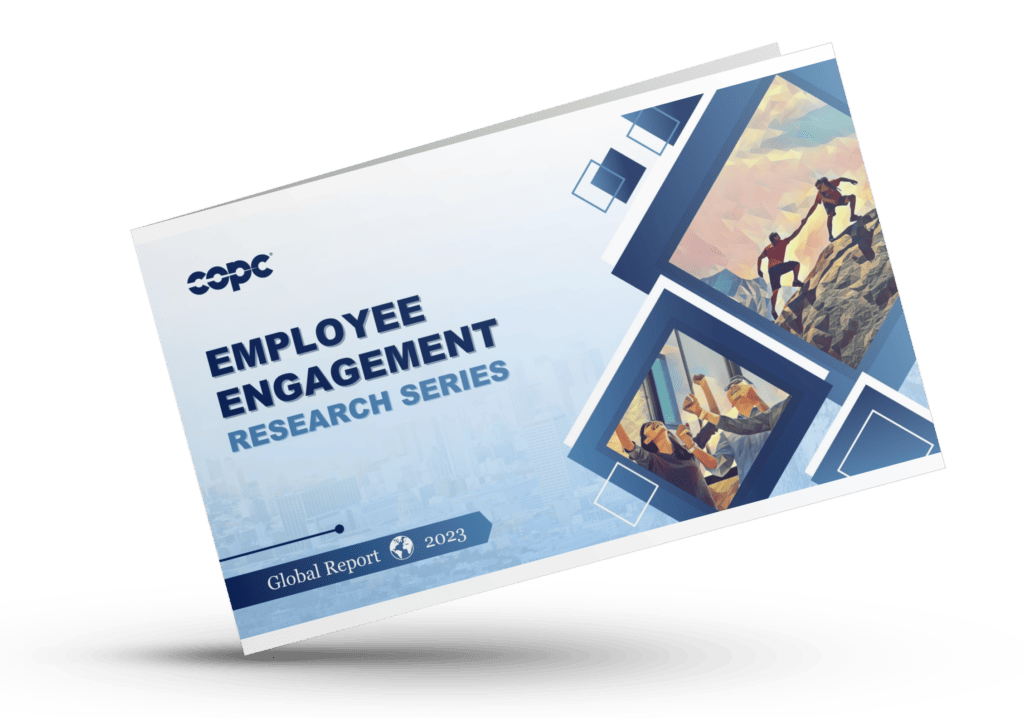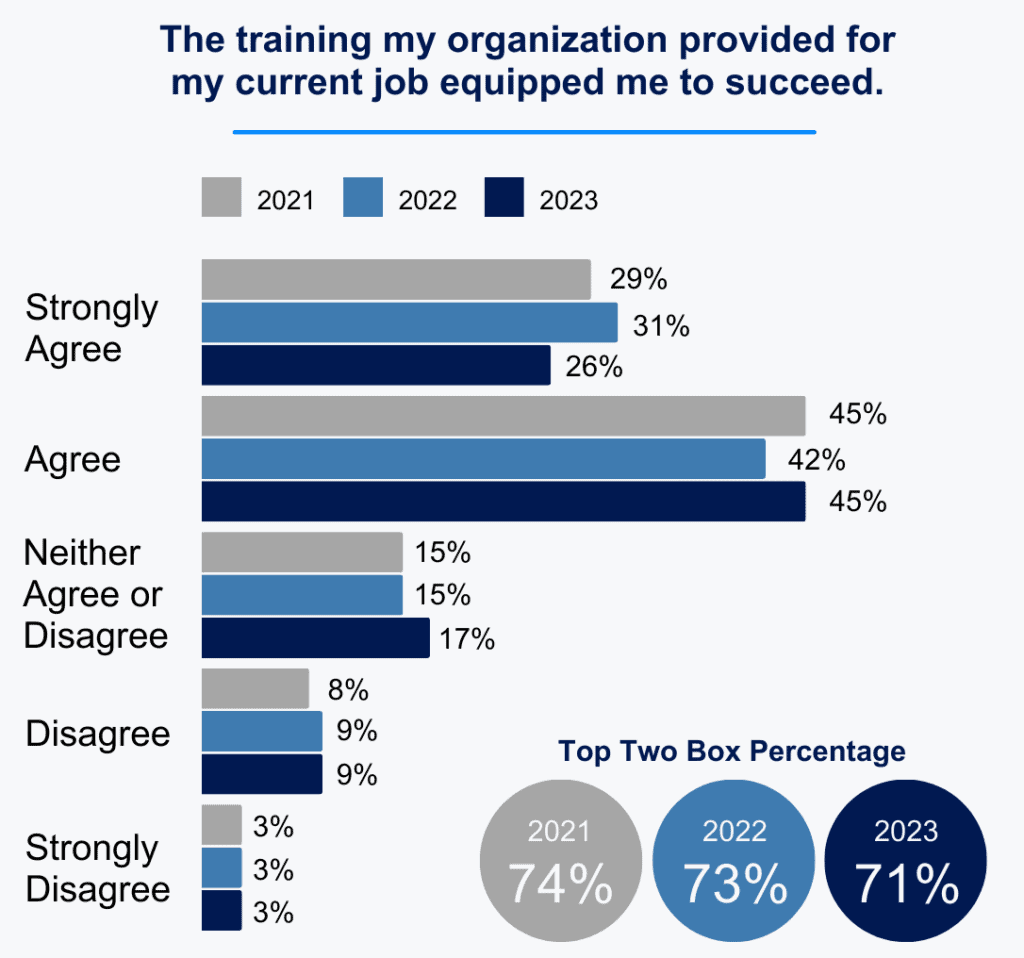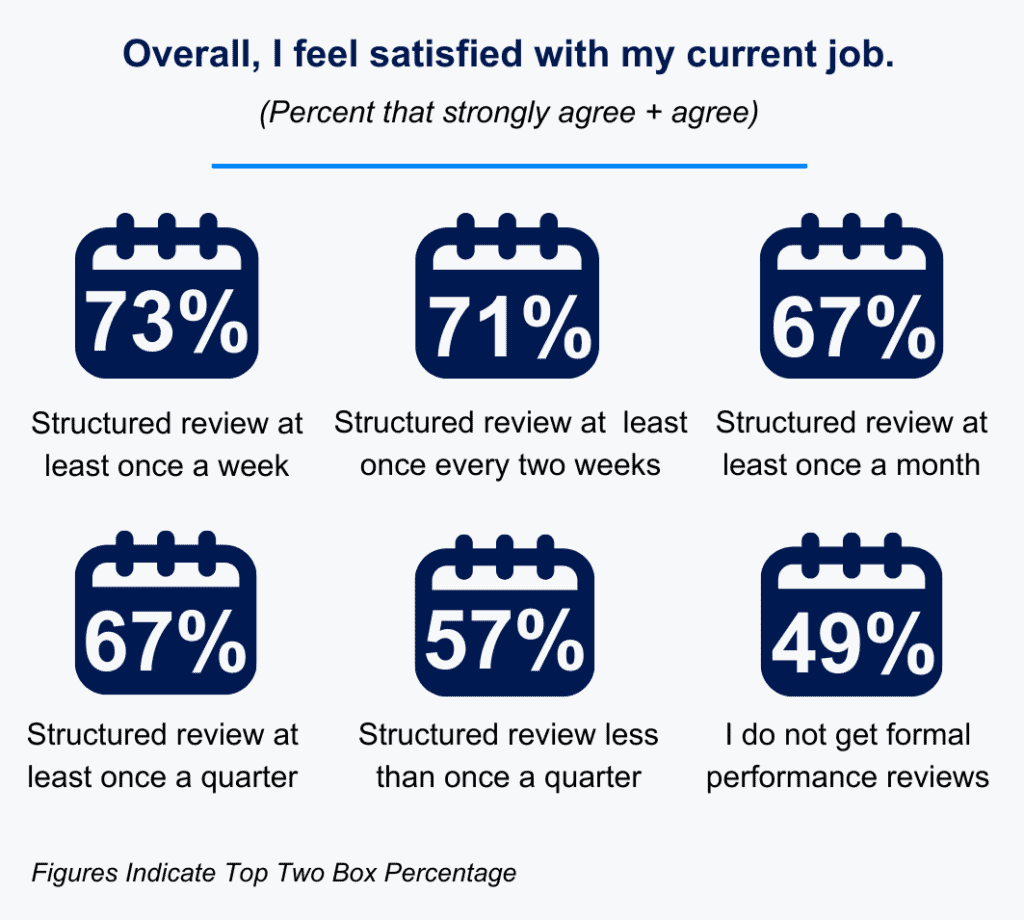
January 15, 2024
COPC Inc. has partnered with Centrical to bring you the Improving Contact Center Retention Series, where we explore how organizations can reduce early attrition. This second installment of the series will offer insights into onboarding best practices for new employees.
We will focus on the importance of the first 90 days, reasons new hires leave during this period, and tips to increase the likelihood of a new hire becoming a long-time employee.

In the first installment of this series, “Call Center Attrition: Avoid the Dilemma of First-day Ghosting,” we provided an actionable overview of creating an accurate job description and implementing a successful preboarding program to prevent attrition before day one.
The Importance of the First 90 Days
Your new hires have completed the preboarding stage and have clocked in for their first day. But before they become proficient and fully productive, there are activities to onboard, train, nest, and become operational, usually happening within their first 90 days.
Every part of the employee experience matters, yet new hire onboarding is an especially critical period. This initial phase lays the foundation for a new employee’s lasting success, shaping their perception of the company and team. Effectively navigating this stage will determine whether they choose to remain with the company long-term. A few key points to remember:
- The onboarding process is a period of alignment with the company and its purpose, vision, and values.
- Onboarding is a “danger zone” for attrition. Call centers typically see ~70% or more of their first-year attrition within the first 90 days.
- Setting expectations and goals for the employee during this period is critical for retention and long-term success.
- Delivering a high-quality training program is essential for new hires to build their skills and become proficient.
- The first 90 days set the tone for the new hire’s relationship with the company, manager, and team.

Employee Engagement Research Series
Learn how satisfied contact center staff are with their jobs, understand what drives employee satisfaction and distinguish the differences between countries.
Why Employees Leave During the First 90 Days
There are a lot of reasons for the excessively high contact center frontline attrition rates, with a few that are endemic to the first 90 days.
Job Shock
Job shock occurs when the actual role does not align with the description. Find tips for avoiding job shock by crafting an accurate job description in the first article in this series.
Ineffective Training
Training should be impactful and engaging, ensuring no trainees are overlooked. Maintaining interest among competent hires will help prevent them from feeling like they are among less dedicated coworkers, including the trainers.

COPC’s Employee Engagement Research Series reveals a declining trend in frontline staff’s perceptions of training effectiveness.
According to the 2023 survey, only 71% of respondents felt their training adequately prepared them for success, down three percentage points over two years. This shift towards neutral and dissatisfied responses highlights the need for substantial improvements in new hire training.
Note that the same surveyed staff who are satisfied with their training are 200% more satisfied with their jobs. They are also twice as likely to remain with their organizations for at least a year. This factor alone cuts attrition in half.
Training must be continuous. While initial training is essential, new hires must remember what they’ve learned and use it effectively in their job. Microlearning and spaced repletion can do the trick when it comes to knowledge retention.
Lack of Manager Support
Coaching is an integral part of an effective onboarding process. New team members’ confidence and performance may decline without proper guidance, impacting retention rates. One challenge for frontline new hires is whether their team leader possesses the necessary technical skills to offer support. Team leaders have significant responsibilities, notably supporting and assisting their team members.
COPC employee engagement research shows approximately one in every four respondents say their leader does not have the technical skills to help them.
Data suggests a strong correlation between staff satisfaction and their perception of their team leader’s technical abilities. Staff who view their team leaders as technically competent are three times more satisfied with their jobs and twice as likely to continue with the organization for another year compared to those who do not share this view.

Inconsistency Around Expectations
Help new hires adjust by setting clear and consistent expectations and goals. Inconsistency can cause frustration and lead them to leave the company.

COPC research shows regular, one-on-one structured reviews increase frontline staff satisfaction. By providing feedback and constructive criticism, staff productivity and performance will improve.
The impact is evident: staff who receive regular, structured feedback have 73% satisfaction, compared to 49% satisfaction among those who do not. Ongoing feedback keeps frontline staff motivated and engaged, leading to better customer experiences and higher job satisfaction, reducing attrition.
Feelings of Isolation
Transitioning to a new company and integrating with the team and culture is challenging, particularly for remote and hybrid employees. However, research consistently shows remote or work-at-home (WAH) employees are more satisfied and often outperform their office-based counterparts.
While there is an appreciation for the time and cost benefits of remote work, the gap in satisfaction between it and an office-based setting has shifted over the past three years. The gap decreased from a nine-point difference in 2021 (70% vs. 61%) to an eight-point difference in 2022 and further to a five-point difference in 2023.

As remote work becomes increasingly common, it is thought that frontline employees will value the benefits less, as they won’t remember when it wasn’t the norm. Regardless of whether they work remotely, employees still need to feel integrated and part of a successful team to remain with a company.

Related
The Leader’s Guide to Contact Center Retention is a comprehensive resource that focuses on aligning expectations, skills, and engagement for successful call center operations.
Onboarding Best Practices: Setting New Hires Up for Success
The first 90 days are a time of high attrition, yet they also present a chance to prepare new hires for lasting and successful tenure, enhancing their long-term value. Below are a few tips to increase employee retention and sustain high performance beyond this initial period.
Boost Training and Knowledge Retention
In the first 90 days, new hires often face overwhelming training and information, comparable to trying to drink from a firehose. As a result, they may only partially retain their new knowledge. Nevertheless, there are a variety of ways to aid knowledge retention. Recommended strategies include:
- Strengthening learning with regular knowledge checks, such as microlearning modules
- Using AI to quickly and effectively identify and address individual knowledge gaps with personalized content
- Ensuring easy access to answers to frequently asked questions
Finally, AI capabilities extend beyond content delivery. It can identify common training and knowledge gaps among teams. AI can then address these gaps by utilizing this data, helping to make frontline training material creation much more efficient and scalable.
Provide Guidance and Actionable Feedback
Managers ought to regularly engage with new hires through frequent check-ins. These interactions should focus on assessing the new hire’s current state and tracking their progress in real-time, enabling the prompt identification and remediation of any weaknesses.
Feedback should be clear and specific, with concrete suggestions for improvement, such as supplemental AI-driven microlearning modules. AI can also aid managers in selecting appropriate learning materials and determining the best steps to address weaknesses.
Align with the Right Key Performance Indicators (KPIs)
Ensure your new hires work toward the most appropriate KPIs and goals. These KPIs should be consistent and achievable. New hires need to understand that performance targets will change as they progress. Initial KPIs can focus on how well they retain knowledge and follow processes and procedures. As they develop, managers can introduce metrics related to quality and efficiency.
Engage Your New Hires
Low engagement and poor connection contribute significantly to staff turnover in the first 90 days, impacting productivity and the customer experience. Therefore, keeping new hires engaged and building a sense of community is critical. In addition to frequent coaching sessions, we recommend:
- Gamifying the experience to boost motivation and engagement through tactics such as peer vs. peer or team vs. team challenges. This is also a fantastic way to recognize and reward your new employees as they progress through their first 90 days.
- Promoting a digital culture for all new hires, whether remote, hybrid, or on-site, with team conversations and social knowledge sharing.
Recognize and Celebrate Success
Coaching to correct and guide is key to building proficiency and professional growth. Equally vital is acknowledging the new hire’s accomplishments and strengths. Recognition can range from celebrating achieved goals and specific improvements to simply applauding their overall performance. Such acknowledgment boosts the new hire’s confidence and sets a positive tone for their long-term journey.
Optimize the Experience
Finally, enhance the onboarding experience by gathering feedback from new hires during and after their first 90 days, including those who left during this period. You can collect this feedback through coaching sessions, wellness checks, regular pulse surveys, and other methods.
Consider using AI to identify common trends, individual needs, and preferences and to prioritize areas needing improvement. The better your organization assesses and improves this experience, the greater the likelihood of future retention.
Summary and Key Takeaways
The initial 90 days of an employee’s journey is a time for establishing a strong foundation. A poor onboarding experience can lead to early attrition or long-term underperformance. However, organizations can significantly improve retention and set new hires on a path to success during this period. A few key takeaways:
- Onboarding Importance: This stage is critical for new hires to align with company culture and develop their skills and knowledge. This period greatly influences their long-term success, attitudes toward the company and team, and willingness to stay.
- High Attrition Risks: Factors such as job shock, poor training, insufficient guidance, inconsistent expectations, and feelings of isolation lead to high turnover.
- Effective Strategies for Reducing Attrition:
- Offer regular, practical feedback and guidance.
- Enhance training to improve knowledge retention .
- Set clear and achievable goals.
- Engagement for Retention: Maintain engagement through consistent coaching by recognizing milestones and promoting social knowledge sharing and gamification.
- Continuous Onboarding Improvement: Regularly collect and analyze feedback from new hires during and after their onboarding to continually refine the experience and lower early attrition rates.
For over a decade, Centrical has helped the world’s leading contact centers engage and retain employees from preboarding through production. Learn more about Centrical and how its employee performance experience platform can drive impact at your organization.
COPC helps organizations attract and maintain a highly engaged workforce, resulting in less time and money spent on recruitment and training due to lower staff attrition. Learn more about how COPC Inc. Employee Engagement Services can help your organization pinpoint the main factors contributing to employee satisfaction and retention.
Keep an eye out for the next and final installment, “Leader’s Guide to Call Center Retention.”


